Abstract
Records of peak expiratory flow rate (PEFR), commonly used in hospital in the management of asthma, have not been evaluated as a method of identifying cases of asthma in population surveys. Four observers were asked to report on whether asthma was present or absent in 61 graphs of PEFR recorded two hourly for four weeks during surveys of working population. Agreement within individual observers was measured using a subset of 29 graphs which had been copied and distributed at random among the set of 61; agreement was good, from 90% in one observer to 100% in two. Agreement between observers was measured on the basis of all 61 graphs. Agreement occurred between all four observers in 69% of graphs, between at least three out of four in 97%, and, when pairs of observers were examined, between 72% and 93% of graphs. Graphs assessed as showing asthma demonstrated more within day PEFR variability (expressed as the number of days in which the difference between maximum and minimum readings was at least 15%) than graphs assessed as not showing asthma. Some graphs with little within day variability were assessed as showing asthma, apparently because they demonstrated between day PEFR variability.
Full text
PDF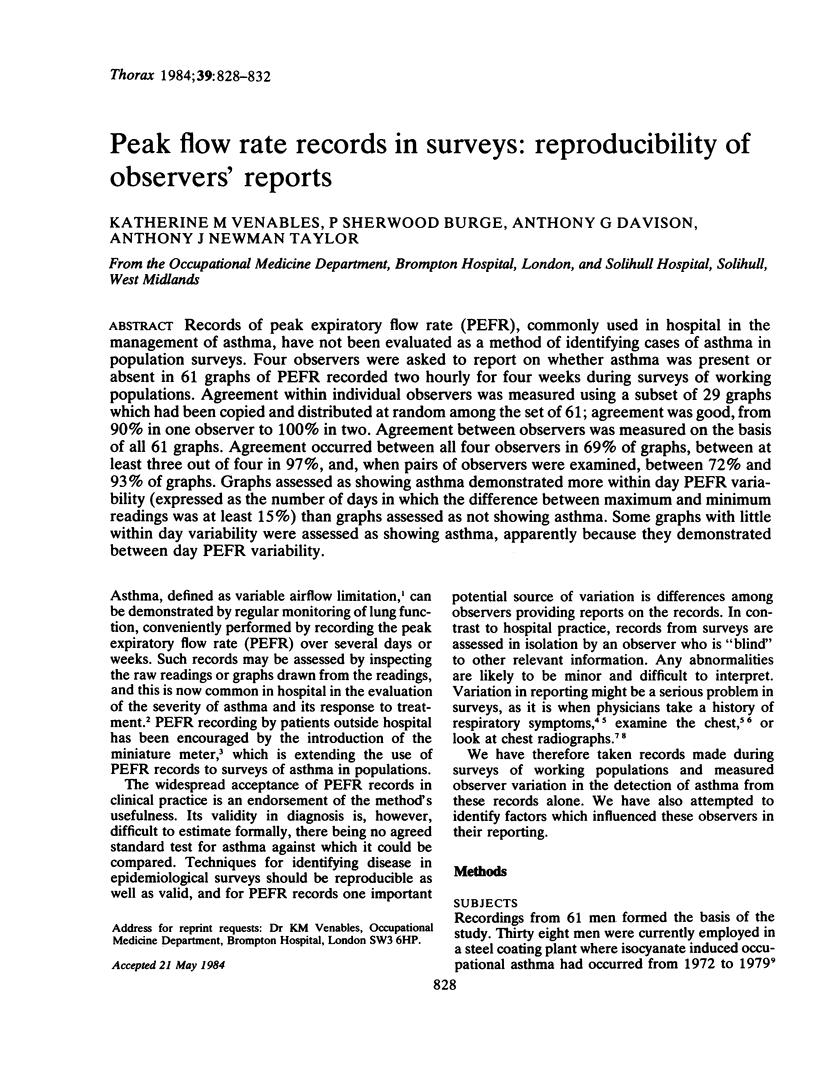
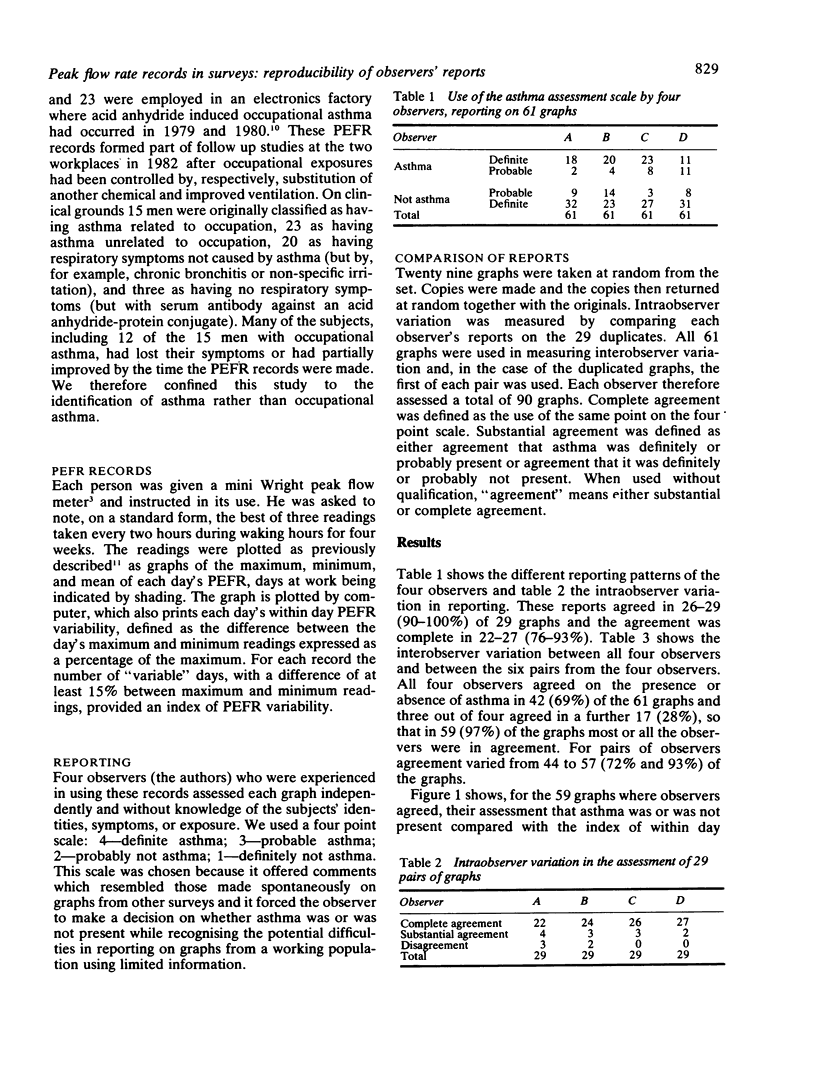
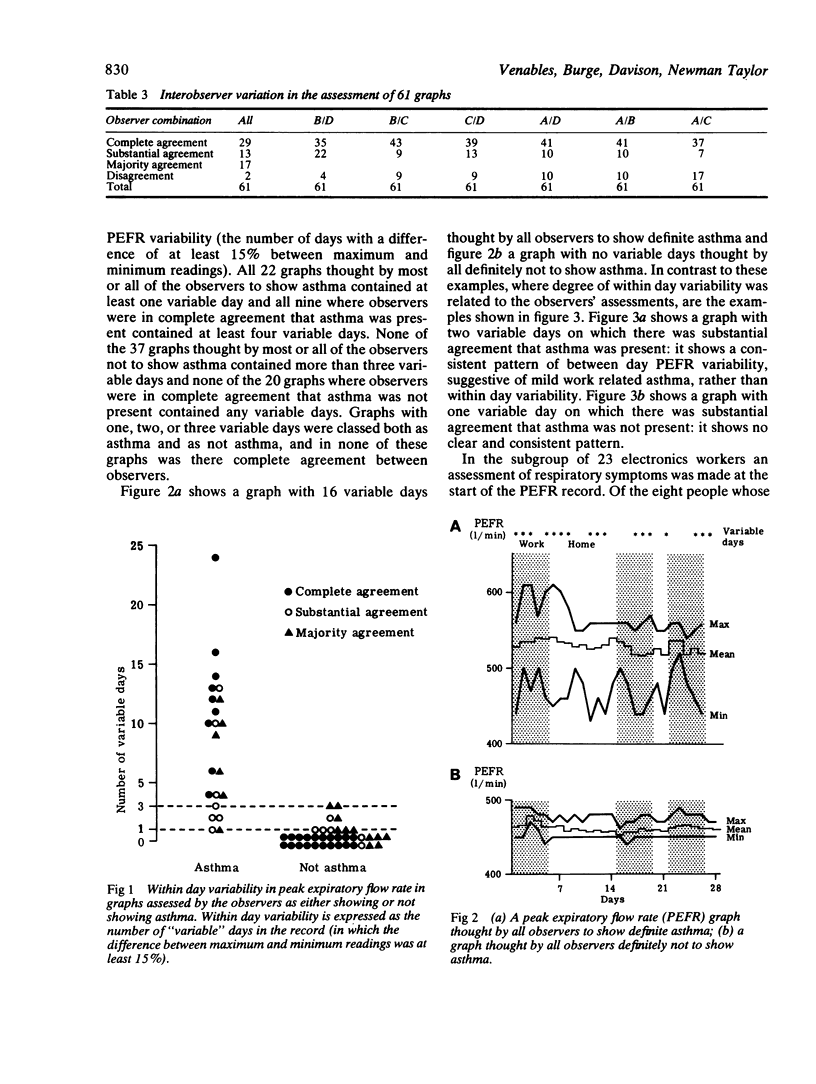
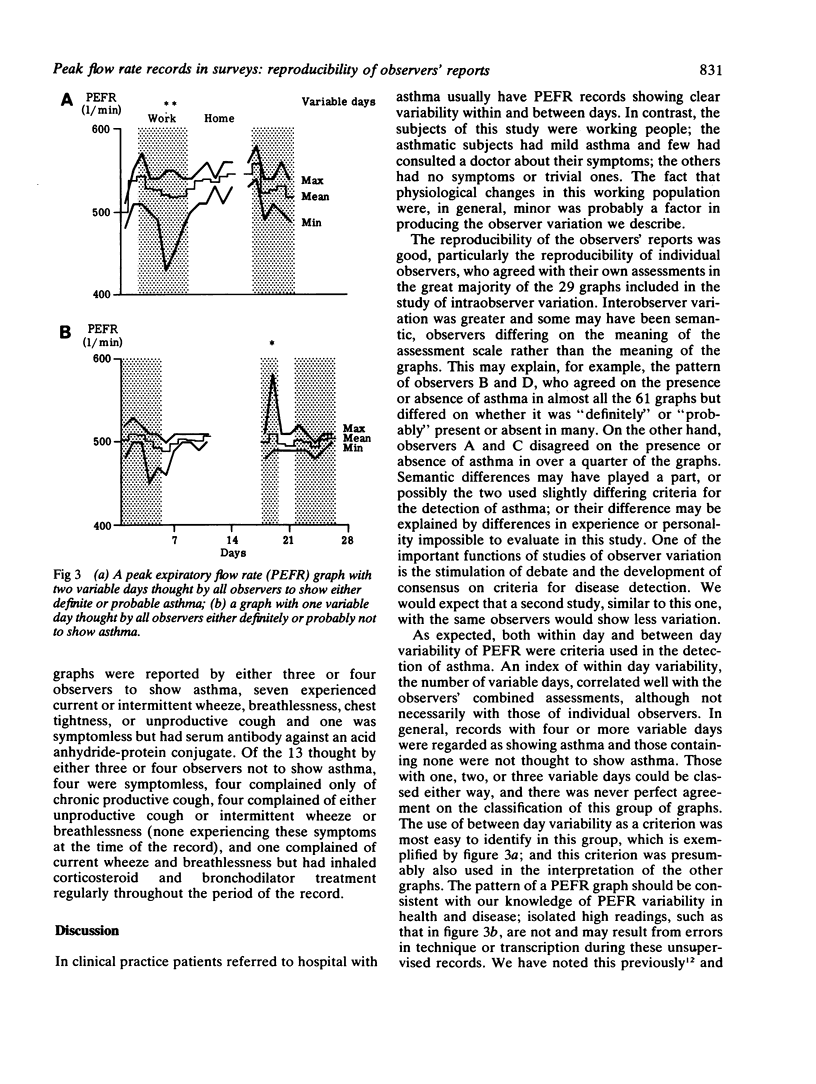
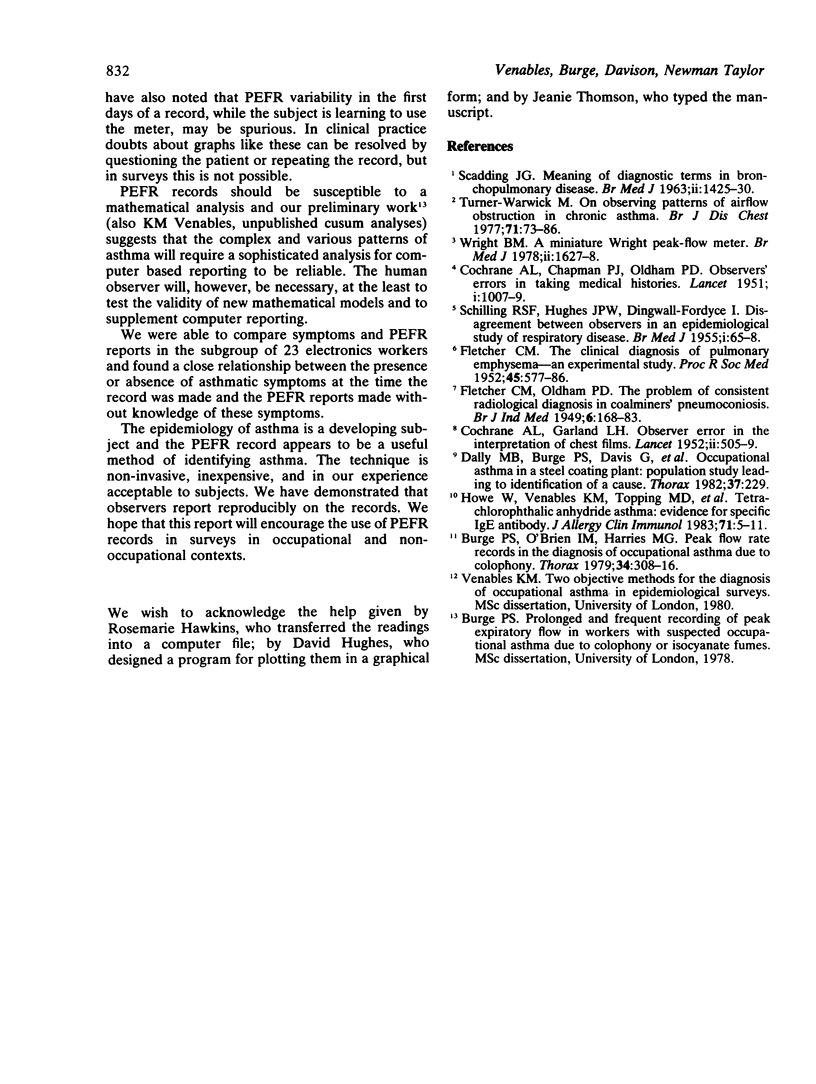
Selected References
These references are in PubMed. This may not be the complete list of references from this article.
- Burge P. S., O'Brien I. M., Harries M. G. Peak flow rate records in the diagnosis of occupational asthma due to colophony. Thorax. 1979 Jun;34(3):308–316. doi: 10.1136/thx.34.3.308. [DOI] [PMC free article] [PubMed] [Google Scholar]
- COCHRANE A. L., CHAPMAN P. J., OLDHAM P. D. Observers' errors in taking medical histories. Lancet. 1951 May 5;1(6662):1007–1009. doi: 10.1016/s0140-6736(51)92518-4. [DOI] [PubMed] [Google Scholar]
- COCHRANE A. L., GARLAND L. H. Observer error in the interpretation of chest films; an international investigation. Lancet. 1952 Sep 13;2(6733):505–509. doi: 10.1016/s0140-6736(52)90291-2. [DOI] [PubMed] [Google Scholar]
- FLETCHER C. M. The clinical diagnosis of pulmonary emphysema; an experimental study. Proc R Soc Med. 1952 Sep;45(9):577–584. [PubMed] [Google Scholar]
- Howe W., Venables K. M., Topping M. D., Dally M. B., Hawkins R., Law J. S., Taylor A. J. Tetrachlorophthalic anhydride asthma: evidence for specific IgE antibody. J Allergy Clin Immunol. 1983 Jan;71(1 Pt 1):5–11. doi: 10.1016/0091-6749(83)90539-0. [DOI] [PubMed] [Google Scholar]
- SCADDING J. G. MEANING OF DIAGNOSTIC TERMS IN BRONCHO-PULMONARY DISEASE. Br Med J. 1963 Dec 7;2(5370):1425–1430. doi: 10.1136/bmj.2.5370.1425. [DOI] [PMC free article] [PubMed] [Google Scholar]
- SCHILLING R. S., HUGHES J. P., DINGWALL-FORDYCE I. Disagreement between observers in an epidemiological study of respiratory disease. Br Med J. 1955 Jan 8;1(4905):65–68. doi: 10.1136/bmj.1.4905.65. [DOI] [PMC free article] [PubMed] [Google Scholar]
- Turner-Warwick M. On observing patterns of airflow obstruction in chronic asthma. Br J Dis Chest. 1977 Apr;71(2):73–86. doi: 10.1016/0007-0971(77)90086-9. [DOI] [PubMed] [Google Scholar]
- Wright B. M. A miniature Wright peak-flow meter. Br Med J. 1978 Dec 9;2(6152):1627–1628. doi: 10.1136/bmj.2.6152.1627. [DOI] [PMC free article] [PubMed] [Google Scholar]


